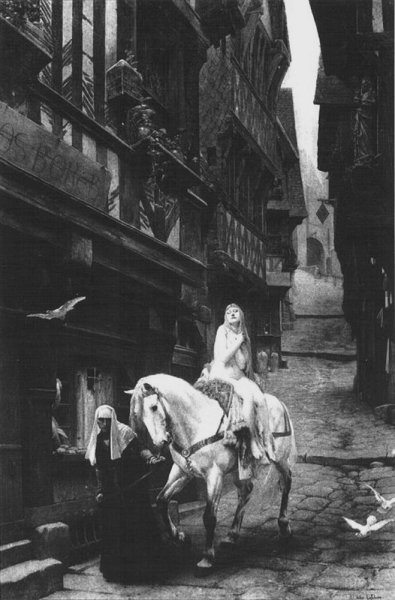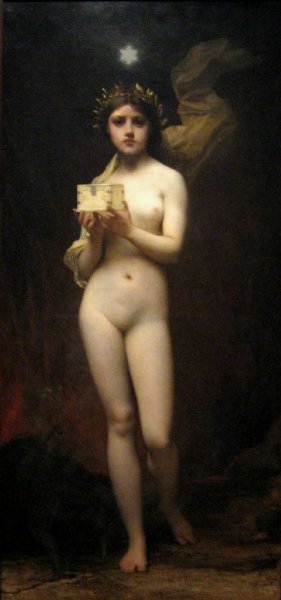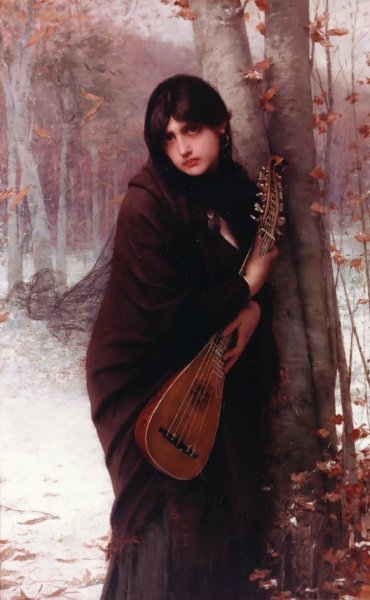Jules Joseph Lefebvre Biography In Details
Early years

Jules Joseph Lefebvre was born on March 14th, 1836. Though his father was only a baker, Jules Joseph Lefebvre nonetheless encouraged his son to pursue painting, sending him to study in Paris in 1852. There, Lefebvre became a pupil of Léon Cogniet and a year later started attending the École des Beaux Arts. His debut at the Paris Salon was in 1855. Jules Joseph Lefebvre then spent the next few years pursuing the coveted Prix de Rome (the main competition for young painters, which would win him five years of study in Rome and a reputation that would all but guarantee a successful career). In 1859 Jules Joseph Lefebvre came close, placing second. Two years later the history painting The Death of Priam would win him first place.- Lefebvre Jules Joseph oil paintings reproductions France- Bio Lefebvre Jules Joseph oil painting France - reproduction oil paintings, oil painting reproduction of Lefebvre Jules Joseph and reproduction oil paintings Lefebvre Jules.
Depression

It would be during his stay in Rome that Jules Joseph Lefebvre would find his individual artistic niche. Able to study the great Italian masters, Lefebvre was fascinated by the Mannerist painters, especially Andrea del Sarto. Jules Joseph Lefebvre copied his work avidly and demonstrated Andrea's influence in his painting Boy Painting a Tragic Mask (1863). It was also during this time that his interest in the female nude began, painting his first in 1863. Among other works Jules Joseph Lefebvre did in Rome, Jules Joseph Lefebvre sent the narrative Roman Charity to the salon of 1864 and painted Cornelia, Mother of the Gracchi in 1866. The latter narrative, however, was ill received by experts, arousing overwhelming criticism. That same year his parents and one of his sisters died. These negative events in both his personal and professional life sent him into severe depression.
He emerged from his depression and came back to Paris with a different approach to art and a change of interest in subject matter. Jules Joseph Lefebvre apparently became disenchanted with the traditional formulaic approach to painting, instead turning towards more precise rendering from life. In 1868 Jules Joseph Lefebvre exhibited a Reclining Nude at the Salon, which unlike his last significant work, won him much praise. Two years later, his allegory of Truth became his first great success. A beautiful young woman holds up a mirror (the conventional symbol of truth). This symbol, though, is at the very top of the painting, so, in order to get to it one's eye has to caress the sensuous feminine curves over the length of the outstretched figure. Shortly after the success of this nude, Jules Joseph Lefebvre was made an officer in the Legion of Honor.
What followed in the decades to come were variations on Truth. His many beautiful nudes took the roles of Mary Magdalene (1876), Pandora (1877), Diana (1879), Psyche (1883), and Aurora among others. His nudes became so famous that his only rival was considered to be Bouguereau. Unlike Bouguereau's figures though, Lefébvre used a greater variety of models, which can be seen in his work.
As a teacher

It is not surprising then that Jules Joseph Lefebvre exhibited seventy-two portraits at the Paris Salon from 1855 to 1898. Most, of course, are of women. Among those who sat for him include his daughter Yvonne, the Imperial Prince in 1874, and the novelist Alexandre Dumas (1869), who also seems to have admired his nudes, purchasing a Femme Nue in 1892.
In the 1870's Jules Joseph Lefebvre became a teacher at the Academie Julien (an atelier that trained women artists as well as men over a decade before they were also permitted into L'École des Beaux Arts). There Jules Joseph Lefebvre is said to have insisted to his students on absolute precision in life drawing. There Jules Joseph Lefebvre became the most admired and sought after teacher of American ex-patriots, who came to Paris to study. Among his most famous American students, were Child Hassam, Frank Benson and Edmund Tarbell.- Lefebvre Jules Joseph oil paintings reproductions France- Bio Lefebvre Jules Joseph oil painting France - reproduction oil paintings, oil painting reproduction of Lefebvre Jules Joseph and reproduction oil paintings Lefebvre Jules.
Following the success of Truth, his accolades kept accumulating. Having won increasingly significant acclaim at the Universal Expositions, Jules Joseph Lefebvre ended up winning the grand prize in 1889. In 1891, Jules Joseph Lefebvre was made a member of the Academie des Beaux Arts. And in 1898, Jules Joseph Lefebvre was promoted to Commander in the Legion of Honor.
What was admired then about Lefebvre, and can be admired today is the idealized realism of his figures. His "thousand adorable creatures" are beautiful yet individualized. Jules Lefebvre died on February 24th 1912. (From TOPERFECT)




